If you’ve been reading up on culinary and health trends you might be asking yourself how to ferment vegetables. Foods that undergo lacto-fermentation are full of healthful probiotics and also enjoy an extend shelf life. Lacto-fermented vegetables add a pleasant and sour crunch when cooking in the kitchen.
Mastering the ancient art of lacto-fermentation is easy. Fermentation recipes simply require a hermetically sealed jar, water, salt and fresh organic vegetables.
Save this story to Pinterest so you can look at it later!
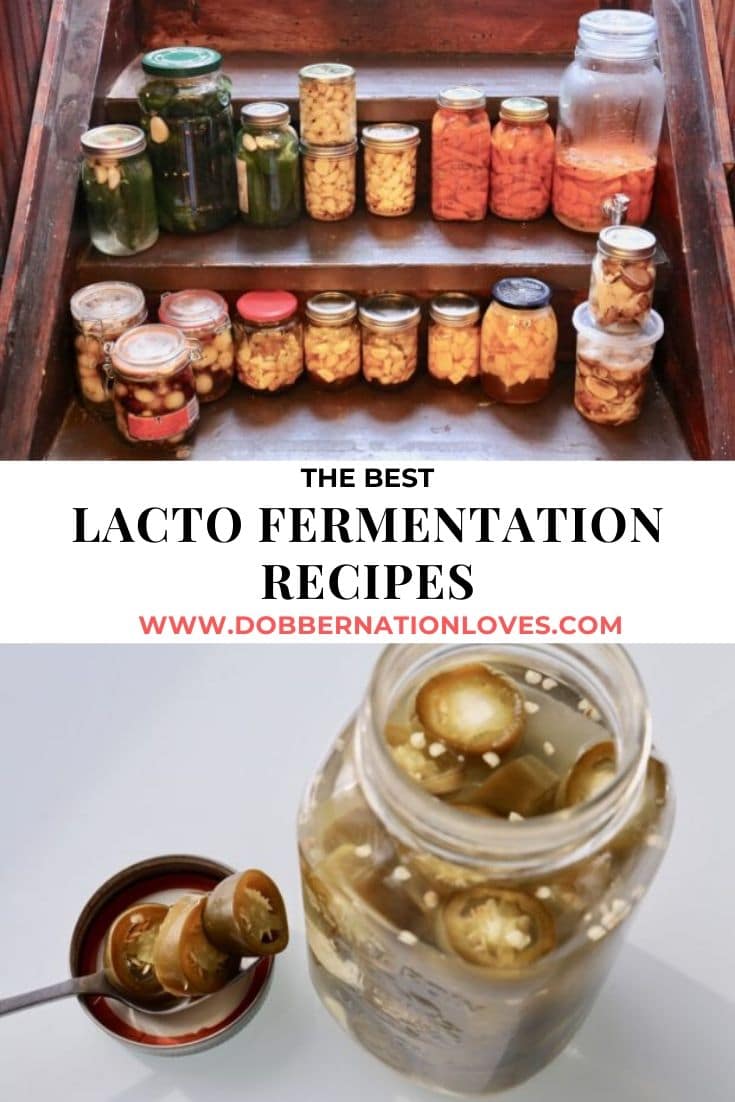
We suggest throwing a fun lacto-fermentation party with friends. Split up the cost of groceries and enjoy a few hours of slicing and salting. You’ll go home with a handful of colourful jars, waiting to bubble and burp.
We assure you there are much more exciting recipes to make than classic lacto-fermented pickles. We share recipes to our favourite lacto-fermented vegetables, including fermented honey, garlic, onions, carrots and Jalapeno peppers.
Host a lacto-fermentation party with friends and enjoy a variety of fermented vegetables at home.
What is Lacto-Fermentation?
At some point, thousands of years ago, early humans learned to use the process of fermentation to enjoy its tasty results. The most familiar fermented foods, like Korean kimchi, Jewish pickles and German sauerkraut are made using lacto-fermentation.
Most people think about beer or wine when they hear the word fermentation. While specialized yeasts are used to convert sugars in grape juice or grains into alcohol, it is tiny bacteria that are responsible for lacto-fermentation. Various strains of these bacteria are naturally present on the surface of plants, especially those growing in or close to the ground such as garlic, carrots, and jalapeños.
The naturally occurring bacteria convert sugars into lactic acid. This acid is a natural preservative that inhibits the growth of harmful bacteria. Lacto-fermentation also increases and preserves the beneficial vitamin and enzyme levels, and digestibility of fermented food.
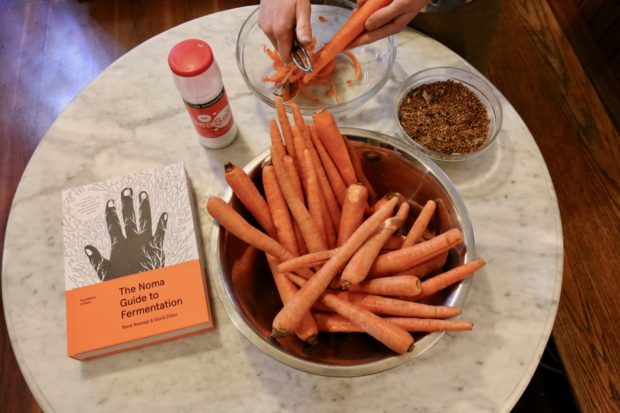
Benefits of Lacto-Fermentation
- if you’re keen to learn how to ferment vegetables for the first time it’s best to start with an easy recipe. Our collection of vegetable fermentation recipes are based on an easy and flexible formula.
- lacto-fermented vegetables are rich in beneficial bacteria and probiotics, which have been proven to encourage healthy gut flora.
- when raw vegetables undergo lacto-fermentation you are able to naturally preserve them to enjoy over a longer period of time.
- chefs love lacto fermentation because it changes a vegetables texture and flavour profile. Acrid raw garlic transforms into candy when treated in fermented honey. Fermented Jalapeno peppers also lose a considerable amount of their spicy heat.
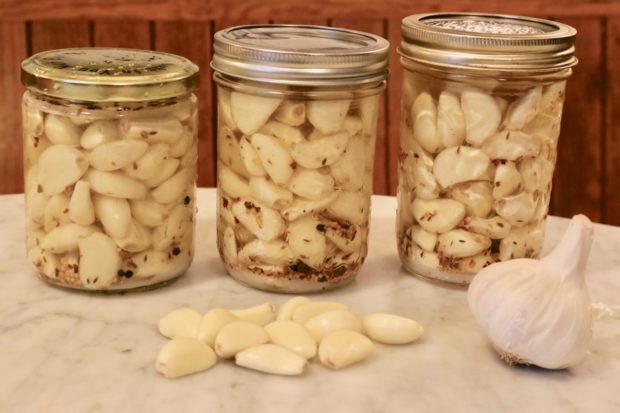
Our Favourite Lacto-Fermentation Recipes
Looking to learn how to ferment vegetables? Here are five of our favourite fermentation recipes:
Lacto-Fermented Honey
Fermented honey is a deliciously sweet syrup. We suggest fermenting honey with garlic. This is the easiest lacto-fermentation recipe as it only requires two ingredients: raw honey and garlic.
Lacto-Fermented Garlic
Fermented garlic is more subdued in flavour than raw garlic. You can easily add fermented garlic to any recipe that calls for minced garlic.
Lacto-Fermented Onions
Fermented onions can be made with large slices of vidalia or red onions. We like to use fermented onions when making savoury cocktails. A perfect replacement to traditional pickled cocktail onions.
Lacto-Fermented Carrots
Fermented carrots offer a perfect crunch to crudités or cheese and charcuterie boards. You can also add lacto-fermented carrots to soups and stews.
Lacto-Fermented Jalapeno Peppers
Fermented peppers are less spicy than raw Jalapenos. Add them to the top of a homemade pizza, stuff them in a juicy burger, or chop them into creamy Mac & Cheese.
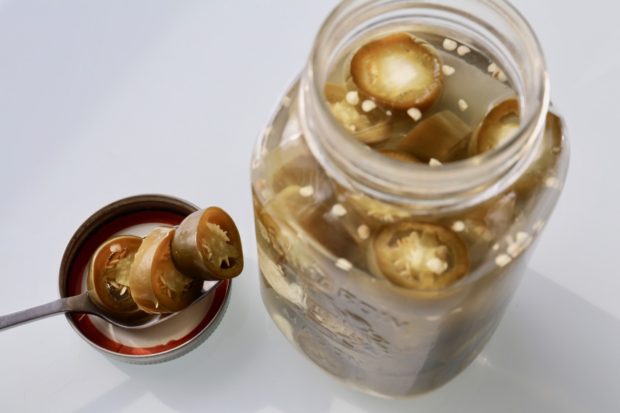
Get Creative with Lacto-Fermented Vegetables
Vegetables that have undergone lacto-fermentation offer a satisfyingly sour crunch. You ideally want to avoid using lacto-fermented vegetables in recipes that require cooking, as the heat will destroy the beneficial probiotics. Here are some of our favourite ways to use lacto-fermented vegetables at home:
- Vinaigrette: add a few teaspoons of fermented honey to your next salad dressing.
- Dips: fermented garlic is best enjoyed when whipped into hummus, guacamole, salsa or baba ghanoush.
- Cheese and Charcuterie: add fermented carrots to a celebratory cheese and charcuterie board.
- Pizza and Burgers: top a homemade pizza or stuff a juicy burger with fermented peppers.
- Salads: top a cold salad with your favourite lacto-fermented vegetables.
- Stews and Soups: add fermented vegetables to hearty stews and soups.
- Savoury Cocktails: garnish a cocktail with fermented onions.
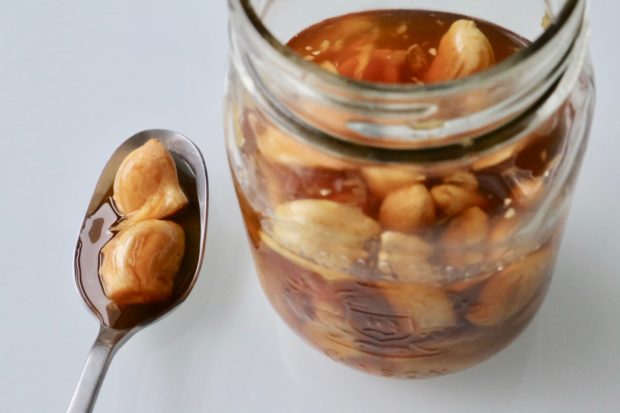
Tips On How To Ferment Vegetables
Our fermentation recipes look very easy based on the short ingredients list. Since lacto-fermentation is a science, it’s best to ensure you understand how fermentation works.
- you’ll need to purchase standard fermentation equipment which can be basic or more specialized. At the very minimum you’ll need measuring spoons, measuring cups and canning jars with a rubber seal. If you plan on fermenting often purchase this fermentation crock for large batches or these fermentation jars fitted with bubble airlock.
- do not fill the vegetables and brine all the way to the top of the jar. You want to have just enough brine to cover the vegetables.
- you can speed up the lacto-fermentation process by adding a teaspoon of organic apple cider vinegar or “sauerkraut juice.”
- ensure the vegetables are always submerged under the liquid to prevent mould growth.
- open your lid each day to burp the jar, releasing a build up of carbon dioxide. This will help you avoid an unwanted explosion in your cupboards.
- feel free to add pickling spices, fresh herbs or sliced garlic to add a boost of flavour.
- at the farmer’s market, purchase heirloom vegetable varieties such as purple carrots, and red onions. Having a diversity of sizes and colours in your jar ensures colourful creativity. A perfect gift for the foodie on your hit list.
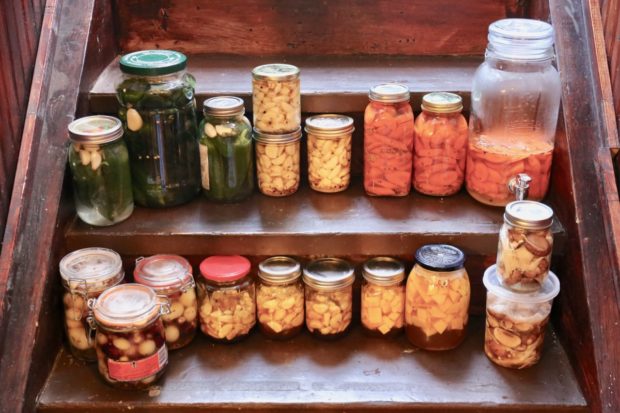
How to Ferment Vegetables
Lacto Fermented Vegetables
Equipment
- Fermentation jars
- chef knife
- measuring spoons
- measuring cups
Ingredients
- 3 cups fresh organic vegetables peeled and sliced
- 4 cups water
- 2 tbsp salt
Instructions
- Once your vegetables are peeled and sliced add them to a mason jar so they are 1 inch from the top.
- Prepare a salt brine by dissolving salt in water.
- Pour brine into the mason jar until carrots are covered.
- Optional: add any additional flavourings such as pickling spices or fresh herbs like dill.
- Put the lid on the jar and store at room temperature in a dark place like your closet or cupboard.
- Open the jar once a day to release carbon dioxide. Fermentation fans call this “burping.”
- Continue this process for 3-4 weeks until lacto-fermentation bubbles no longer form.
- Move the jar to your fridge once lacto-fermentation has completed and enjoy for the next 3-6 months.
Some of the links in this story use affiliate links. This means that if you make a purchase through our site, dobbernationLOVES will earn a small commission at no extra cost to you. Your support helps us to produce comprehensive content.
New to fermenting? Check out these great books and products to get you started!
Fermentation Revolution by Sebastien Bureau & David Cote: Covers everything you need to know about fermentation to start a lacto-fermentation revolution in your pantry!
The Art of Fermentation by Sandor Ellix Katz: The most comprehensive guide to do-it-yourself home fermentation ever published.
The Noma Guide to Fermentation by Rene Redzepi & David Zilber: At Noma in Copenhagen, named the world’s best restaurant, fermentation is one of the foundations behind their extraordinary menu. Read their never-before-revealed techniques to creating Noma’s extensive pantry of ferments!
Fermented Vegetables by Kirsten & Christopher Shockey: This easy-to-follow guide presents more than 120 recipes for fermenting 64 different vegetables and herbs.
If you’re ready to start fermenting and are looking to ferment beer or wine purchase this great home brewing kit!
This Easy Fermenter Kit was created to help make fermenting simple. It comes with 3 Wide Mouth Mason Jar Lids & 1 Oxygen Extraction Vacuum.
This 5L Glass Fermentation Crock + 45 recipe book set lets you make delicious, fermented favourites in an affordable design at home.
We also love this Simply Sauer Vegetable Fermentation Kit which comes with 1 oxygen pump and 4 air airlock lids. If you are planning to ferment multiple items at once, they also make this great Mason Jar Fermentation Airlock Lid Kit.



